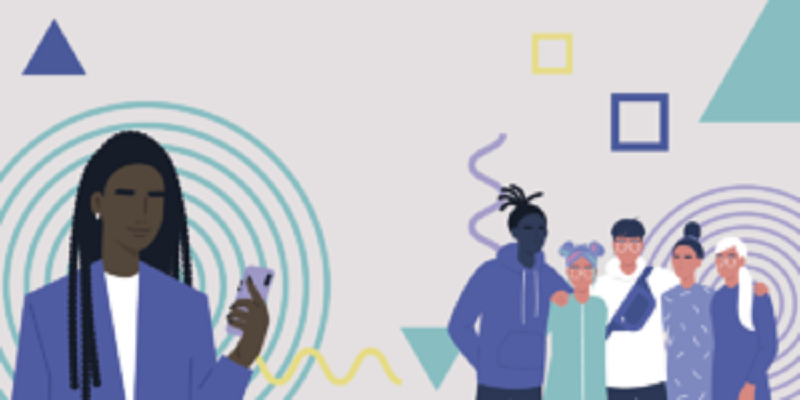
“At the present rate of change, it will take nearly a century to achieve (gender) parity, a timeline we simply cannot accept in today’s globalized world, especially among younger generations who hold increasingly progressive views of gender equality.”
Having celebrated International Women’s Day last month it was fabulous to see so many individual women being spotlighted for their inspiration, leadership and achievements and yet, on the other hand, disappointing that in 2022 we are still needing a day to remember and recognize women.
The theme for 2022 for IWD was #BreaktheBias and focused our attention on creating more equity, bias-free, stereotype free and discrimination-free workplaces and societies. In 2020 the UN Gender Social Norms found that almost 90% of people (men and women) across 75 countries, hold some sort of bias against women. That is staggeringly high. Learning about our bias is key.
What does that mean in practice?
There are examples across the globe of bias against women. The obvious ones are unequal pay, the higher incidents of sexual harassment or the low numbers of women on boards and senior positions. Women are still not recognized as being as competent as their male counterparts and personal beliefs support the view that men make better leaders. There are no countries in the world with gender equality.
“Globally, close to 50% of men said they had more right to a job than women. Almost a third of respondents thought it was acceptable for men to hit their partners.”
What is really interesting is where there are female leaders in the spotlight the country’s view is different. In New Zealand, for example, a country that currently has a female leader, only 27% of people thought men make better political leaders.
“In the UK, 25% of people thought men should have more right to a job than women and said men made better business executives than women did. In India, that figure was 69%.”
The stereotypes are unconscious and are present whenever we are making decisions about people, whether that be about performance, suitability or competence. We read about women being judged on performance, men on potential! Leadership fit is based on masculine norms; feedback is more technical for men and less so to women, and less overall for women. So, what can we do to ensure gender equality and overcome the systematic bias and prejudice that exists across the business world?
- Do you know how and where the bias exists?
- Do you know what to do about it?
- Do you know how to be an ally to support this?
This is where training and development can help, firstly to raise awareness and then to provide the skills to do something about it. We can all be allies and women cannot do this alone.
Raise Awareness of Bias
- Raise your awareness of the bias that exists in processes such as selection, recruitment, work-life balance, promotions, appraisals
- Raise your own self-belief and remove those negative stereotypes you have been led to believe
- How are you creating inclusion around you in all your interactions so everyone benefits?
Find out about unconscious bias, inclusive meetings, and inclusive communications and see what you can do to role model fairness and respect. There are lots of resources, face-to-face and virtual workshops to support your learning.
Speak up and out about bias and inequality when you spot it
Too often we turn a blind eye when we hear that unfair remark or assumption being made. We don’t want to get involved or make things worse. Get in touch about our Active Bystander training to see how you can engage positively to encourage changes in behaviors.
There are visible signs of inappropriate actions around us that we need to stamp out. Nip them in the bud early on so they don’t escalate. Find your simple “go-to” statement or question to raise the other person’s awareness around what they have said to signal the impact they are having. Rather than “That’s a sexist comment you just made” – where we may trigger someone else’s defense mechanisms, try “What do you mean by that”. We not only cause them to pause and think about what they have said, but we are also more likely to encourage a longer-term assessment of their behavior and therefore a change.
Be the Ally we all need
David Smith and Brad Johnson in their book Good Guys share their experiences on how men can be better allies to women in the workplace.
“Research shows that when men are deliberately engaged in gender inclusion programs, 96% of women in those organizations perceive real progress on gender equality, compared with only 30% of women in organizations without strong male engagement.”
Too often organizations and society try to fix women rather than fixing the process or system The recent tragedies of women who were killed whilst out alone at night put a spotlight on the unfairness of expecting women to stay safe, stay in, protect selves rather than educating boys that women are equals and not to be harassed, bullied or taken advantage of.
Men need to be on board, so it is not a blame and shame exercise but one of proactive allyship and support.
Ask yourself how you can be a better ally to women around you.
We want gender parity, not women exiting the workforce because we haven’t acted. 4 in 10 women have considered leaving their company or switching jobs—and high employee turnover in recent months suggests that many of them are following through.
- Educate yourself and role model inclusion
- Take action where you spot bias
- Be a proactive ally
Learning and developing together is more likely to impact and create an inclusive workplace. Be proactive with your learning, identify some key development opportunities and commit to adopting some new skills. Collectively we can make a difference.
Discover our new Equality, Diversity and Inclusion collection here.




